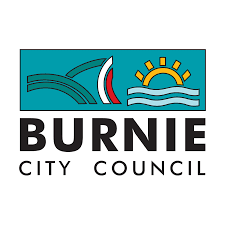Title Page
-
Site conducted
-
PHRA Number
-
Business Name
-
Location
-
Manager/Proprietor
-
Contact Email
-
Contact Phone Number
-
Personnel Spoken to
-
Officer
-
Date and Time
General
-
1. Are client records kept? (name, address, phone, procedure, date)
-
2. Are there written procedures for operators conducting piercing/tattooing?
-
3. Is after-care information provided to client?
-
Operators have sound knowledge of relevant legislation and guidelines for the particular risk activity?
-
5. Operators performing skin penetration are immunized for Hepatitis B?
-
6. Contaminated re-usable ‘sharps’ stored in clearly labelled puncture proof container
-
7. All ‘sharps’ stored appropriately when not in use?
Personal Hygiene
-
8. Are hands washed before and after each client?
-
9. Are new disposable gloves used for each client?
-
10. Are wounds/sores on operator covered with a clean waterproof dressing?
Premises
-
11. Are premises kept in a clean and tidy condition?
-
12. Are clean towels and linen used for each client?
-
13. Are benches/chairs covered with disposable material for each client?
-
14. Are surfaces cleaned after each client? What cleaning solution is used:
-
15. Are infectious waste disposal procedures adequate?
-
16. Are hand washing facilities appropriate? (Liquid soap/paper towel, hand-basin with single outlet hands free tap, hot and cold water)
Equipment
-
17. Is an autoclave used to sterilise equipment?
-
18. Are records of autoclave service and usage kept?
-
19. Is all equipment coming into contact with blood/mucous sterilised in autoclave?
-
20. Is sterile pack opened in front of client?
-
21. Is infectious waste bin easily accessible?
-
22. Is a ‘sharps’ container available for disposable instruments and needles?
Ear Piercing
-
23. Piercing gun cleaned and disinfected between clients?
-
24. Studs, clasps, retainers and adapters sterile before use?
-
25. Ear piercing gun only used on the external ear
Tattooing
-
26. Are ointments/dyes in single use disposable containers, or applied with disposable applicators?
-
27. Are sterile dressings used to cover tattoos / reduce bleeding?
-
28. Is a disposable razor used for shaving?
-
29. Are stencils/patterns or templates disposable (single use)?
-
30. Is needle and bar autoclaved after soldering, and opened in front of client?
-
31. Are tattoo ‘washing’ spray bottles protected from contamination (i.e. wrapped in plastic bag - new bag for each client)?
-
32. Are the nozzle, needle bar and needle cleaned after each client and sterilised?
-
33. Is the electrical hand piece wiped with 70% ethyl or isopropyl alcohol after each use?
Body Piercing
-
34. Are needles for body piercing single use / disposable?
-
35. Are needles disposed of in ‘sharps’ container?
-
36. Is jewellery sterilised before use or in pre-sterilised individual packages?
-
37. Is area of skin cleaned with 70% isopropyl alcohol or 70% ethyl alcohol before piercing?
-
38. Are sterile articles opened in front of client?
Public Health Activity Registration
-
Is the business currently registered under the Public Health Act 1997?
-
Business must submit an application form and pay the prescribed fee.
-
Are all operators licenced under the Public Health Act 1997
-
All operators must submit an application form and pay the prescribed fee.
Other Comments
-
undefined
Further Action Required
I have read this report and understand its contects.
-
Personnel Signature
-
Officer Signature
-
This Assessment contains finding from the date/time of the inspection only.
-
For further information please visit these website:
The Department of Health:
https://www.health.tas.gov.au/health-topics/environmental-health/public-health-act-and-associated-guidelines
Burnie City Council:
https://www.burnie.net/Community/Services-and-Programs/Public-Health-and-Safety/Preventing-illness/Skin-Penetration-Activities














